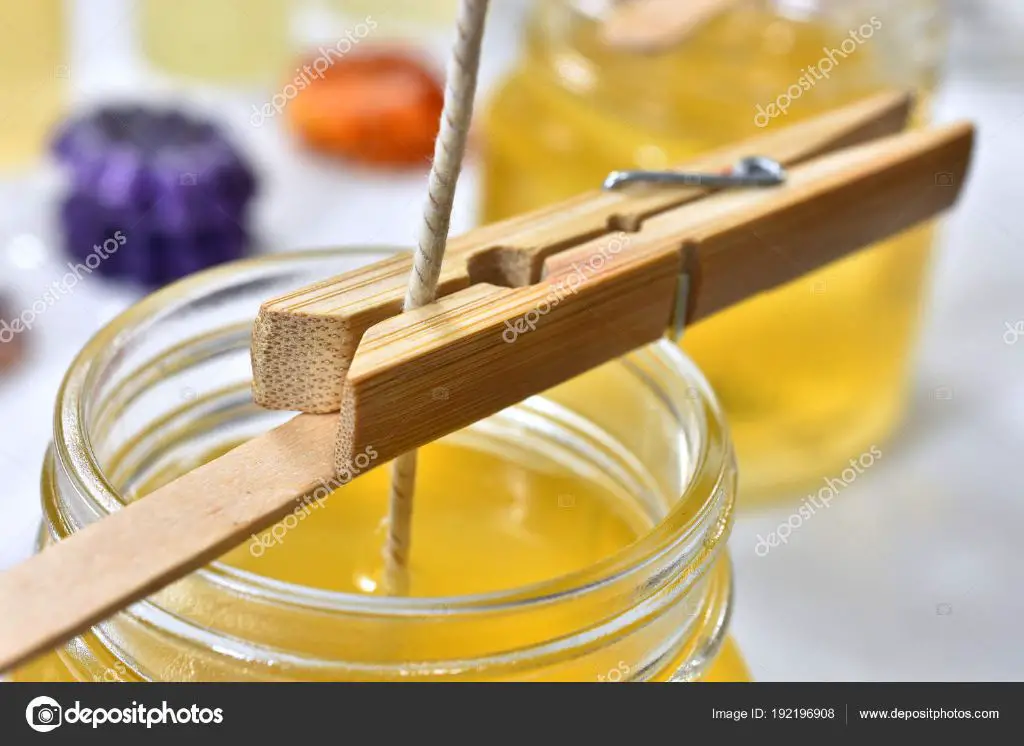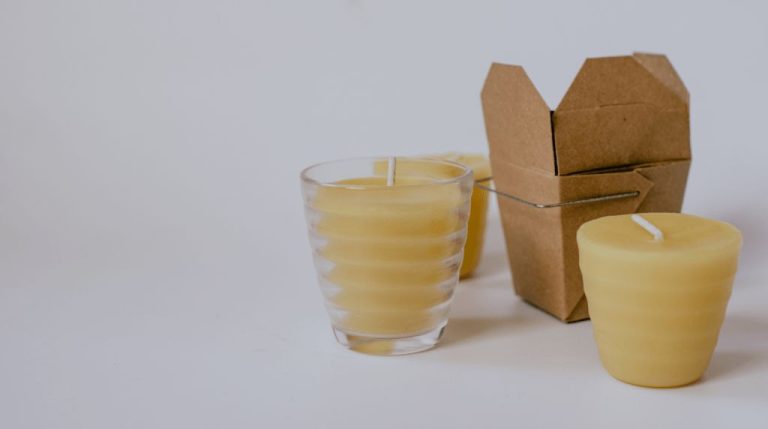Is Soy 10 Wax Good?
What is Soy Wax?
Soy wax is a vegetable wax made from the oil of soybeans. After harvesting, the beans are cleaned, cracked, de-hulled, and rolled into flakes. The flakes are then solvent extracted with hexane to separate the soybean oil. The oil then undergoes hydrogenation, a process that adds hydrogen to the oil to convert the liquid oil into a solid wax. Source
The main components of soy wax are hydrogenated soybean oil and soy stearine. Soy stearine is a type of natural fat that helps harden the wax. Compared to other waxes like paraffin and beeswax, soy wax has a lower melting point and becomes liquid at lower temperatures. It also has a cleaner burn and less smoke when used for candles. Soy wax is considered more environmentally friendly than paraffin since it comes from a renewable resource. Source
Pros of Using Soy Wax
Using soy wax provides a number of key benefits over paraffin wax and other traditional waxes. Some of the advantages include:
Soy wax is made from soybeans, a renewable and sustainable resource. The soybeans are grown on farms and then processed into soy wax. This makes soy wax a biodegradable and more environmentally friendly option compared to petroleum-based paraffin wax.
Soy wax candles typically have a natural scent and slower burn time than paraffin candles. This slower burn is good for achieving an even melt pool and leads to a longer-lasting candle overall.
Most soy wax is non-toxic and hypoallergenic as well. Many individuals with scent sensitivities find soy candles to be gentler and healthier alternatives to traditional candles. The natural properties of soy wax make it less irritating for people with allergies or chemical sensitivities.
Cons of Using Soy Wax
While soy wax has many benefits, it also has some potential drawbacks to be aware of:
Can be more expensive than paraffin wax – Soy wax is often more expensive than paraffin wax. Paraffin is a byproduct of petroleum refining and therefore is very cheap. Soy wax is made from soybeans, which must be grown, harvested, processed, and transported, making it cost more per pound than paraffin (source: https://www.happyflame.com.au/pages/why-not-soy-candles).
May not retain scent as long as other waxes – Soy wax may not hold onto fragrance oils as long as paraffin or other types of wax. The natural properties that make soy wax cleaner burning can also mean fragrances don’t last as long (source: https://joetiehome.com/blogs/news/the-pros-and-cons-of-soy-wax-candles-what-you-need-to-know).
Can be more difficult to work with – Soy wax has a lower melting point than paraffin, so it can be more finicky to work with. Proper pouring temperatures and candle vessel preparation is important when making soy candles. The softer wax can also lead to issues like wet spots on the candle surface (source: https://www.everythingdawn.com/blogs/news/34785665-the-pros-and-cons-of-soy-wax).
Soy Wax for Candles

Soy wax is a popular choice for candle making due to its many beneficial properties. It has a lower melting point than paraffin wax, melting between 115-145°F, which allows soy wax candles to liquefy at lower temperatures (source: https://www.candlescience.com/learning/how-to-make-a-soy-candle/). Soy wax has a smooth, creamy texture that allows even distribution of fragrance oils. The natural structure of soy wax also provides excellent scent throw in candles.
Compared to paraffin wax, soy wax is better at holding fragrance oils and essential oils, resulting in stronger scent diffusion and aroma retention in finished candles. The natural molecular composition of soy wax allows more thorough blending and binding with liquid oils. The lower melting point also aids scent throw by keeping the wax pool at a warmer temperature when burning (source: https://www.treehugger.com/diy-soy-candles-4864253).
Soy wax can be blended with other waxes like paraffin, beeswax, and palm wax to modify the burn properties. A soy-paraffin blend creates a harder finished candle with enhanced scent throw. Adding beeswax gives plasticity to soy wax and increases the burn time. Palm wax helps raise the melting point of soy wax to make container candles. Proper wax blending is key for achieving desired results.
Soy Wax for Skin Care
Soy wax is often used to make body products like lotions and balms because it provides skin benefits when applied topically. Soy wax contains vitamin E, an antioxidant that helps hydrate and protect skin (Source). The wax is able to bind moisture to the skin, leaving it feeling soft and smooth. Soy wax is also gentle and unlikely to cause irritation for those with sensitive skin.
Studies have shown that applying soy wax to the skin can increase collagen production and elasticity. The phytoestrogens in soy wax, like genistein, may help reduce the appearance of wrinkles and fine lines over time with regular use. Soy wax is sometimes combined with essential oils or other ingredients like shea butter to create nourishing lotions, creams, and salves. It goes on light, absorbs well into the skin, and does not leave an oily residue.
Many people find that products containing soy wax are effective for very dry, cracked skin on hands and heels. The wax forms a protective barrier that seals in moisture. Soy wax is also used to make solid lotion bars, lip balms, and body butters. Since it melts at a low temperature, soy wax products glide onto skin smoothly when rubbed. Soy wax is a versatile natural ingredient for homemade skin care recipes.
Soy Wax for Food
One of the main uses for food-grade soy wax is for coating fruits and cheeses to prevent them from drying out, getting spoiled, or becoming a sticky mess. According to Blended Waxes, food-grade paraffin wax acts as a preservative for foods and helps them stay fresh for longer. The wax coating creates a protective barrier around the food.
Cheesemakers often coat hard cheeses like cheddar or gouda in food-grade soy wax, which allows the cheeses to age without drying out. The wax seal also prevents mold growth. Fruits like apples are sometimes coated in a thin layer of soy wax after harvest to lock in moisture and freshness during shipping and storage.
In addition to preserving freshness, the soy wax coating gives fruits and cheeses an appealing shine. The wax fills in crevices and smooths out rough surfaces. Food-grade soy wax is safe for human consumption in small amounts. The wax helps prevent sticky messes by sealing in juices and liquids.
Buying and Storing Soy Wax
When buying soy wax, you can purchase it from craft stores, candle making suppliers, or online retailers like Amazon. Some popular brands of soy wax include Golden Brands, Cargill, NatureWax, and EcoSoya.
There are a few varieties of soy wax to choose from. Soy wax 464 is a versatile blend good for containers and pillars. Soy wax 444 is better for votives and tarts. Soy wax 415 has a higher melt point for candles in warmer climates. Make sure to buy the right soy wax for your specific candle making needs.
Proper storage of soy wax is important for quality candles. According to Vincentland Candle Co and Suffolk Candles, soy wax should be kept in a cool, dark place with a stable temperature between 50-80°F. Store soy wax in sealed containers away from heat, humidity, and light which can all degrade the wax. Keeping soy wax refrigerated is not recommended as temperature fluctuations from the fridge can cause moisture buildup. With proper storage, soy wax can last upwards of a year before quality is compromised.
Working with Soy Wax
Working with soy wax requires some specialized techniques and knowledge to achieve the best results. Here are some tips for melting, pouring, adding color and fragrance, and troubleshooting common problems when making soy candles.
To melt soy wax, use a double boiler or makeshift setup with a saucepan and metal or glass bowl on top. Heat the wax slowly to temperatures between 150°F and 185°F, checking it often with a thermometer. Avoid overheating soy wax above 185°F, which can cause it to scorch or lose its scent throw. Always stir melted wax before pouring.
Before pouring, preheat candle jars by filling with hot water and emptying just before adding wax. Pour wax at 135°F-165°F for pillars or containers, or 115°F-135°F for votives and tarts. Cool candles for at least 24 hours before burning. Proper pouring temperatures prevent issues like wet spots, frosting, or sunken wells in finished candles.
Use candle dye blocks or liquid dyes when coloring soy wax, adding just a small amount at a time and stirring well. For fragrance, add 4-8% by weight in the melted wax at 115°F-135°F. Stir continuously for 2 minutes to properly bind fragrance oils.
Common troubleshooting issues include seams, frosting, poor fragrance throw, tunneling, or wax separating from container walls. Adjusting pour temperatures, cooling methods, wick size, fragrance amounts, and colorants often helps resolve them. Testing small batches first is recommended when experimenting with soy wax.
With the right techniques, soy wax’s versatility makes it easy to achieve professional-looking pillar candles, votives, melts, or containers.
Soy Wax Projects
Soy wax is a popular DIY ingredient for homemade beauty and food projects. Here are some of the most common soy wax projects you can try at home:
Candle Making
Soy wax is commonly used to make container candles. It’s easy to melt, blends well with fragrance oils, and gives candles a smooth finish. Some popular soy wax candle projects include:
- Simple soy container candles – fill jars with melted soy wax, add a cotton wick, and let cool. Decorate jars with paint, glitter, leaves, flowers, etc. (https://www.pinterest.com/toriruiz/soy-wax-candles/)
- Soy wax tarts – pour soy wax into silicone molds to make wax melts or tarts. Add fragrance and use in wax warmers. (https://www.pinterest.com/devlonnorthwest/soy-wax-flakes/)
- Soy wax pillars – pour melted soy wax into a mold to create pillar candles. These look beautiful unscented or scented.
Balms, Lotions, and Massage Bars
The emulsifying properties of soy wax make it useful for DIY skin care recipes. You can create:
- Soy wax lotion bars – combine soy wax, oils, and butters in a mold. Rub on skin to moisturize.
- Soy lip balms – melt soy wax, add flavor/essential oils, and pour into lip balm tubes or tins.
- Soy massage bars – mix soy wax, oils, and butters. Use to massage moisturizing oils into skin.
Food Coatings
Food-grade soy wax makes an excellent coating for snacks and confections. Dip fruits, pretzels, chocolate, etc. into melted soy wax for a thin, glossy coating.
The Future of Soy Wax
The future looks bright for soy wax. As consumers become more interested in supporting environmentally-friendly and sustainable products, demand for soy wax continues to increase. According to a 2022 industry report, the global soy wax market size is expected to reach $10.8 billion by 2031, exhibiting a CAGR of 7.2% (Business Research Insights, 2022).
Several trends are contributing to the growing popularity of soy wax products:
- Increasing demand for natural, non-toxic candles and skincare – Soy wax is biodegradable and allergen-free, making it appealing for health-conscious consumers.
- Rise of small-batch, artisanal candle makers – Small businesses are embracing soy wax’s versatility and customization options.
- Shift towards locally-sourced and sustainable ingredients – Soy wax supports American farmers and reduces environmental impact due to domestic sourcing.
- New product innovations – Candle makers are experimenting with new soy wax blends and formulas to enhance scent throw and burn time.
While the soy wax industry has typically been concentrated in the Midwest near soybean growing regions, there are now small-scale artisans sprouting up across America to meet demand. Supporting these local soy wax businesses helps reduce the environmental impacts of transport while also building local communities and economies.
As soy wax increases in popularity, consumers can expect to see exciting new products and sustainable innovations that harness the potential of this versatile natural wax.




